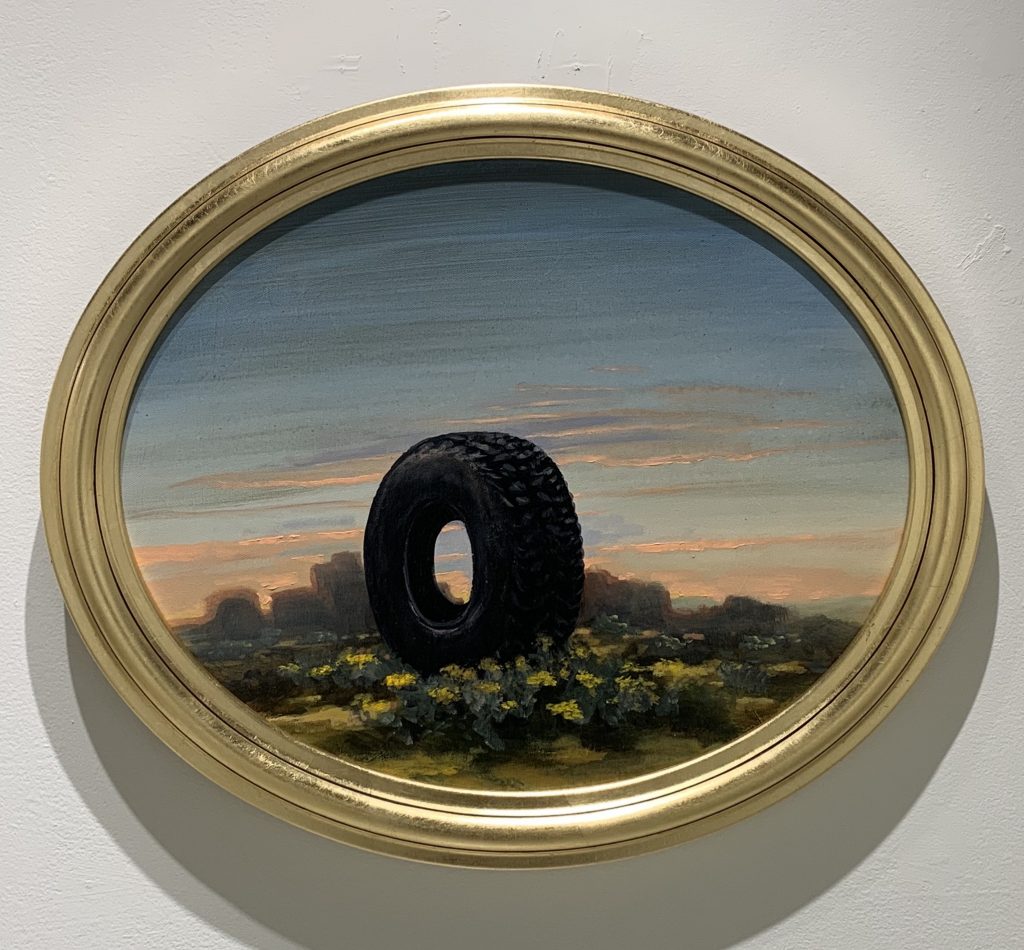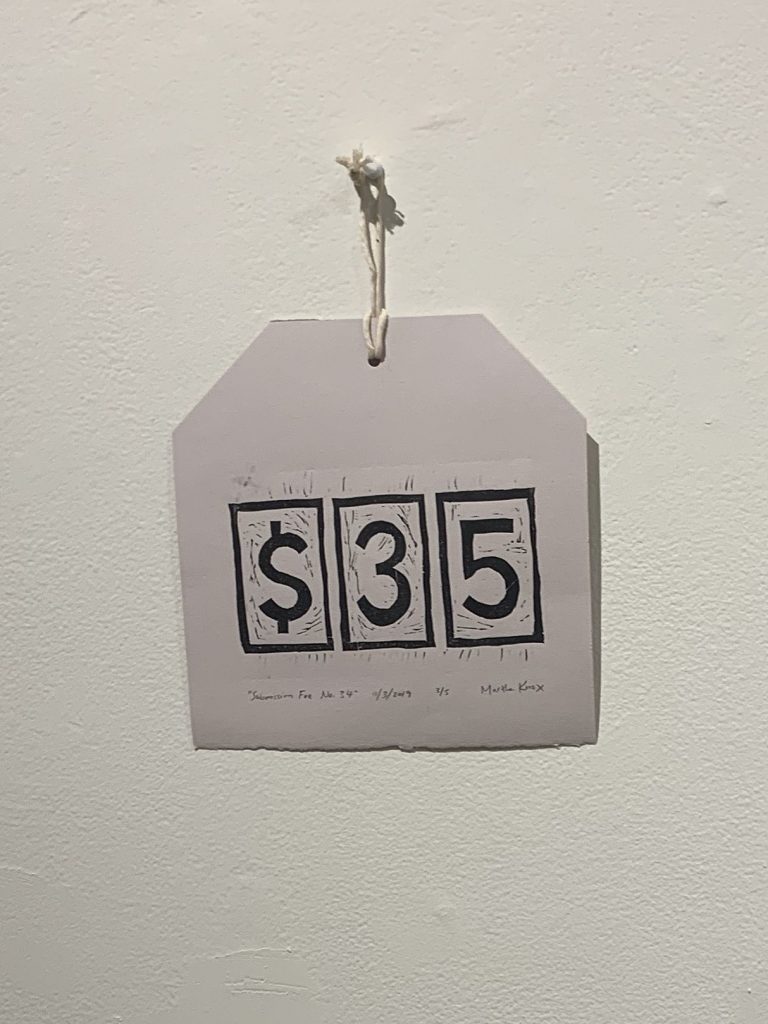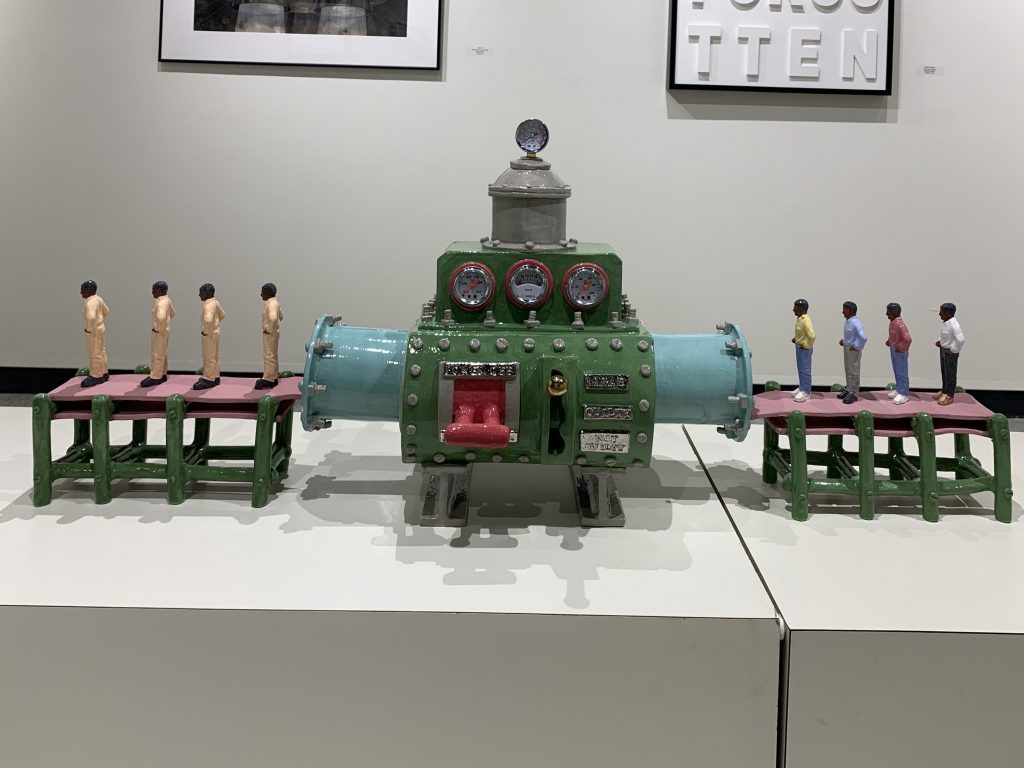By Jonathon Holden Staten

This year, Valdosta State University had the honor of hosting the 32nd annual “Valdosta National” in the Dedo Maranville Fine Arts Gallery, consisting of fifty artists and fifty-two works from twenty-five states across the U.S. The exhibition showcases the “best” contemporary art from all media. As the viewer enters the installation, art is displayed to the left and right with a choice of where to start. Furthermore, each piece was given a text panel consisting of the title of the artwork, type of medium, the artist’s name, and the location where the artist works. The floating question of the exhibition was “is this actually the best art?” Art is a relative term. Many artists, art historians, and others have defined characteristics or guidelines for something to be art, yet those guidelines have constantly been broken by a new movement of art. Using the artwork’s originality, craftsmanship, the content, and composition, I will evaluate what the artist is intending their art to convey.

As the viewer visits each artwork, choice is also being presented with what and why the artist chose the subject matter they did; this is essential, especially for the beginning of change. Kevin Sloan’s The Mesa, for example, introduces the subject of environmental impacts. Sloan’s work is an interesting piece because of its rounded canvas and golden frame, essentially giving it an elegant impression. Its name already gives the visitor an insight of what is being represented, a flat-top hill in the desert. Using acrylics, cotton candy colors of blue and pink wisp smoothly in the background as the sun sets behind the mesas while lying in the foreground is an up-right tire one-third ways down of the canvas among yellow desert flowers. The piece is kept relatively clean for its composition and smooth paint brushstrokes. It seems to have the cliché landscape characteristic and a sunset but introduces a new concept—a slightly rotated dark tire. Sloan hooks the viewer conceptually and visually by inserting the tire; they could interpret this through an environmental lens involving the pollution of the Earth, or a political lens with the need of change, or a personal lens. Awareness is growing around the world as animal life, plant life, and sea life are diminishing and are affected by the human population with the things we throw out and do not care for—plastic bags and bottles, chemical fumes from automobiles, deforestation, oil spills, and countless more. It seems the governmental systems do not want to act on this cause by making such things illegal for the salvation of the environment. Instead, we are obligated to start marches, petitions, and foundations to initiate this change on our own. I see this as an excellent piece for its originality of using a singular “dirty” object in a beautiful setting and bringing up questions and concerns about the environment we live in.

Submission Fee No. 34, by Martha Knox, is a woodcut print of a dollar sign and the number thirty-five in black ink. It is relatively small on a piece of possible newsprint with a black border around each letter or symbol and the slightest mark making to add texture. The piece seems unoriginal with the basic price tag composition and seems to barely propose a question to the viewer except why the actual number thirty-five. Reading further into the artist’s statement, viewers learn that Knox uses the number to refer to the submission fee for the exhibition she is accepted in; thirty-five might even denote the price of this one. I find Knox’s work unique as she delves into the art world by showcasing the cost artists must pay to display their work(s). Why must artists pay a fee to be entered in an exhibition even with the possibility of no one noticing it? Is this a sacrifice all artists must make and is it worth it?

The ceramic sculpture Conveyor of Justice by Ramayana Baba displays a blue, green, pink, and red conveyor belt with four colored figurines in everyday clothing entering a tunnel and then an additional four exiting, wearing orange; this connects to prisoners who are also wearing the same color. The machine contains a lever that reads guilty, not guilty, and other phrases as a continuation of the prison system. The artist’s use of clean, glossy, pastel colors throughout the piece pulls the viewer in because it conveys a fun, child-like quality; at a closer glance, the viewer is able to see it is a more serious issue that challenges the political system of faulty incarceration of African Americans across the U.S. Choosing a three-dimensional piece rather than a two-dimensional one allows the composition and space to be broadened because the visitor can choose where to view it. Baba challenges the American political system by using his creativity to incorporate formal elements of art and bring the issue of a faulty political system to the viewer’s attention.
The installation was successful with ideas crisscrossing one another to truly form the “best” of contemporary art. Artists are given choice with what they want to create and by doing so, they seem to veer towards the big idea of change. They do so by creating pieces that are original or are obvious but are overlooked by society. This is a vital aspect of artists because they can choose to highlight an issue or subject matter for the viewer to see/understand clearly or they can leave the viewer oblivious, forcing them to delve deeper to discover the meaning. As artists, is this the real reason to create works of art—to create a piece that establishes the first step for a change or even a revolution of a new movement? The “Valdosta National” exhibition is an excellent example of how art is a relative term and only the ones who are able to see the art physically can truly decide what is good or bad in their own eyes.
Jonathon Holden Staten is a senior in the Art Education program at Valdosta State University. Upon graduation, he plans to pursue a teaching career in K-12 public education.